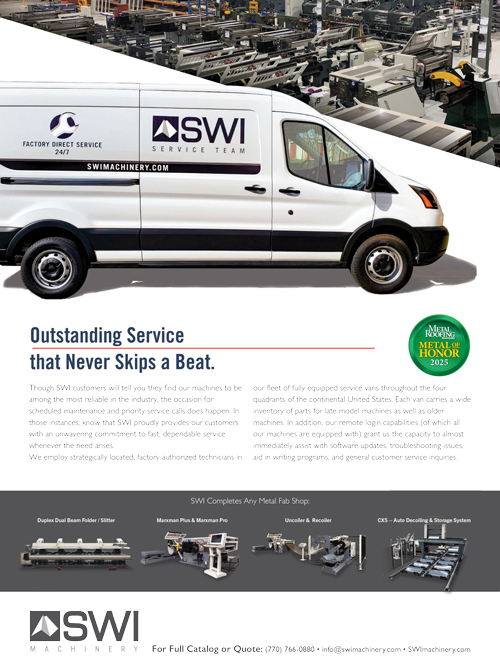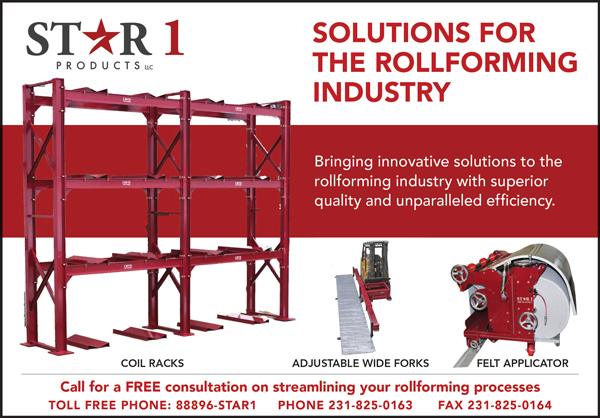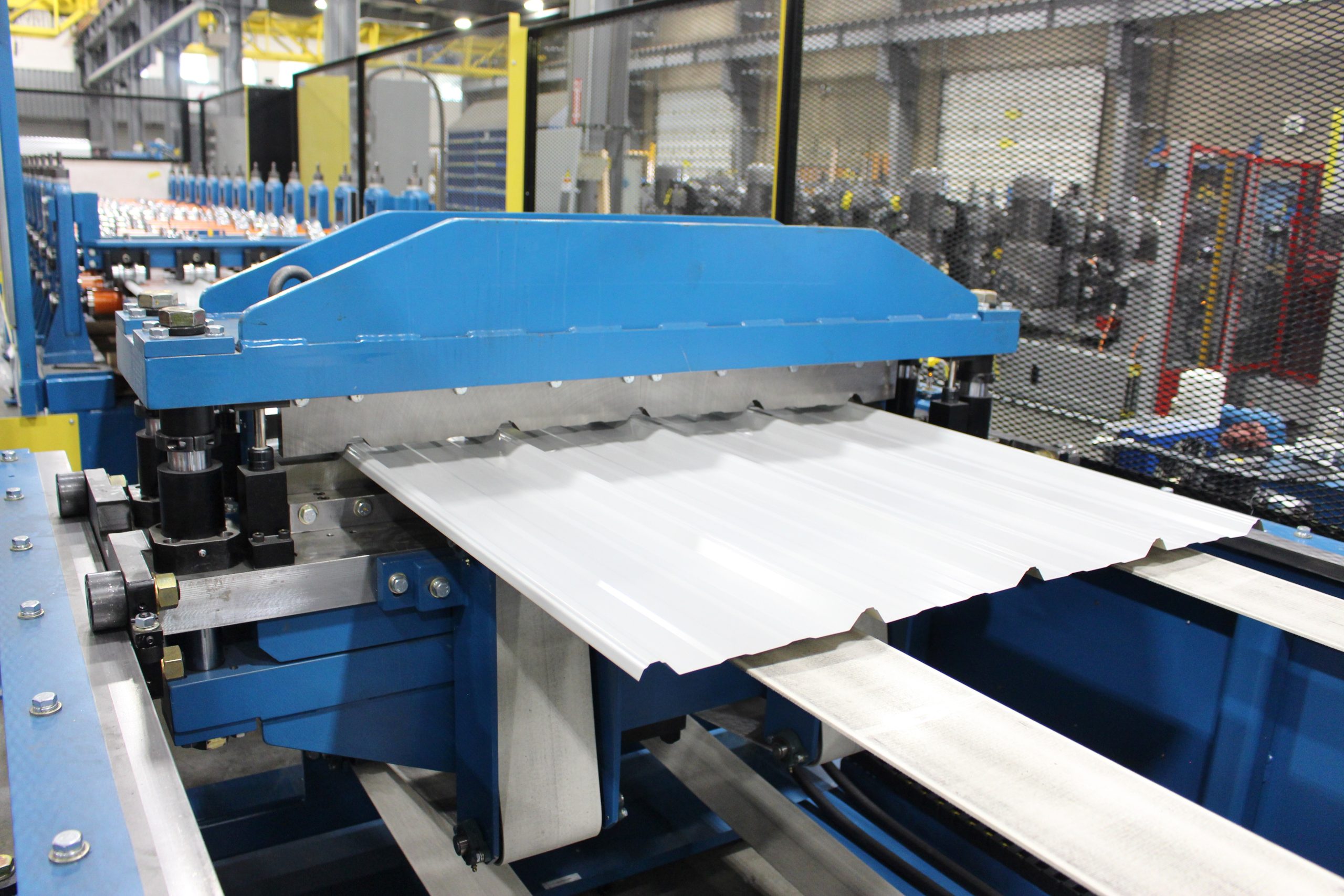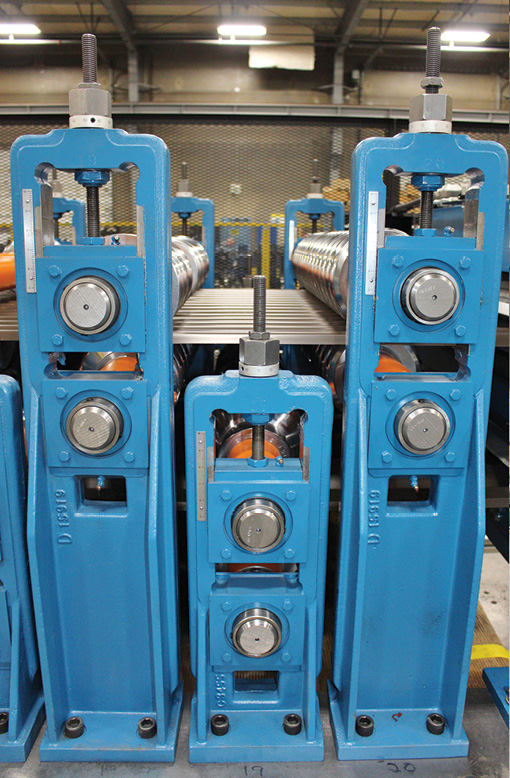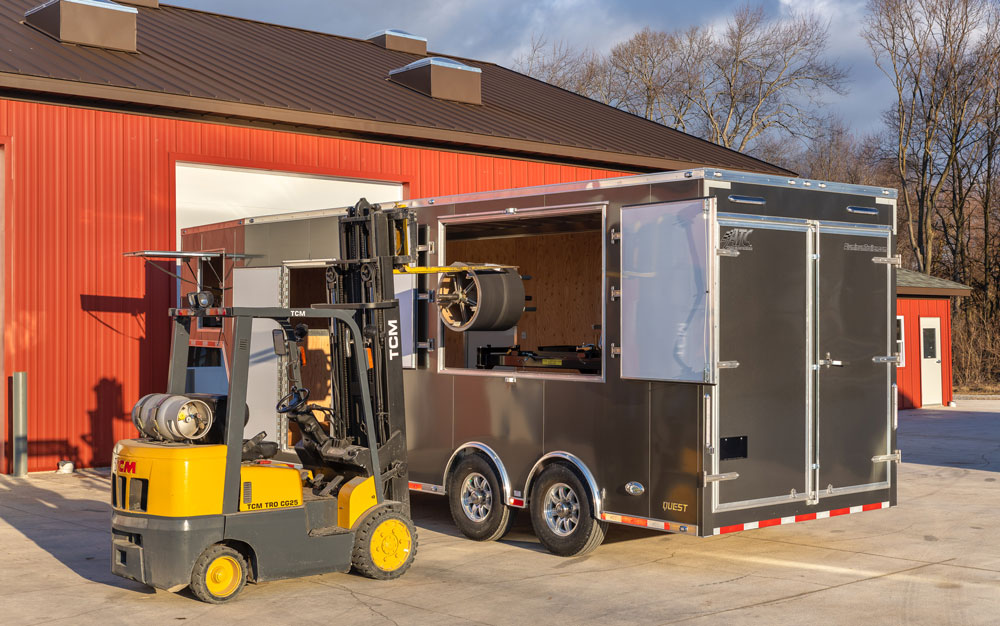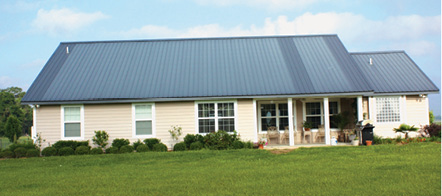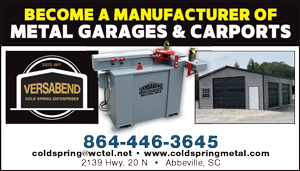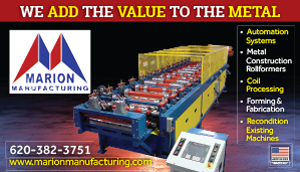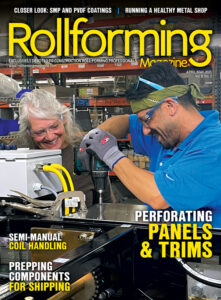Many manufacturers can provide low-tech equipment when a metal shop doesn’t want or need high-tech, computer-operated metal forming machines. Users who don’t want to rely on an outside power source can work with the equipment manufacturer to configure a machine that suits their needs.
If someone wants to adhere to a low-tech tradition of operating without power from the outside, it’s important to convey what the needs and restrictions are to the equipment manufacturer. According to Acu-Form’s Wayne Troyer, rollformers will often ask, “How does this work?” when they should be asking, “Can you make it so we can run it this way or this way?”
Equipment Options
The rollformer should provide the equipment manufacturer with information about features they can and can’t use, including if they’re able to use electricity, or 12-volt, or hydraulics. “What a lot of manufacturers will tell them is what they can do for them,” Wayne says.
What the outcome may look like is the manufacturer can build the machine, put a sprocket on, and tell the rollformer what RPMs the sprocket should be running at. And then it’s up to the rollformer to make it work. “Often times, someone in the Community can set up the drive and powertrain to run it in a way that’s feasible for them to run it. Rollformers will convert machines themselves, too.”
Wayne says about Acu-Form: “We’re here to do whatever somebody wants, regardless of what they want and how they want it set up. We work with customers to give them what they want.”
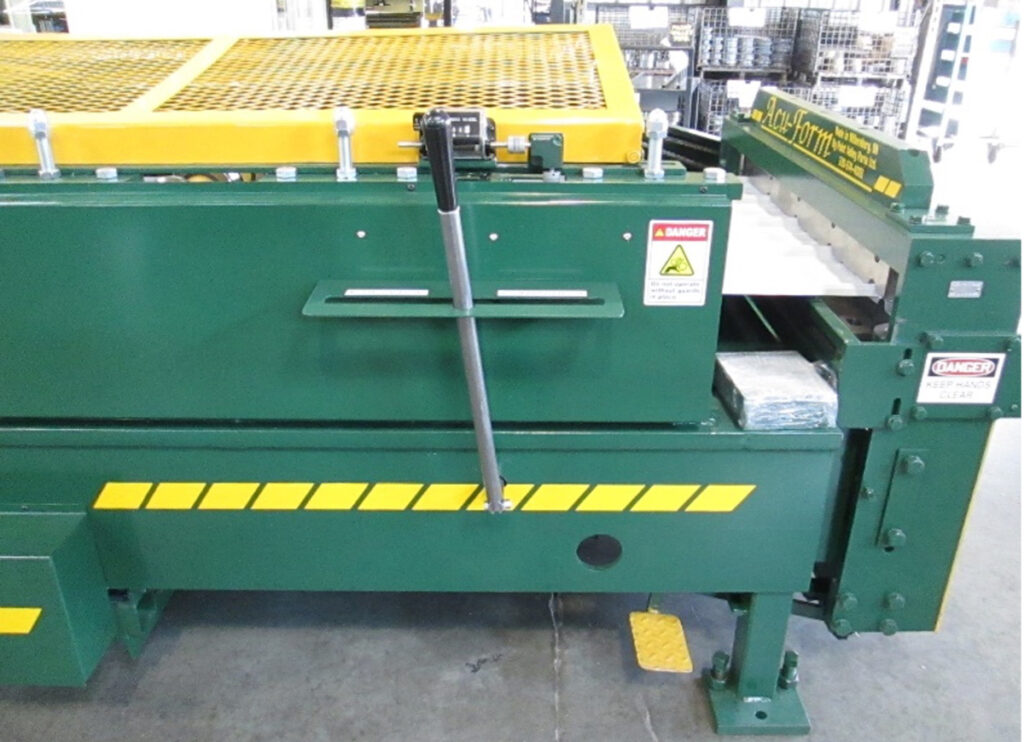
A cable clutch engages the line shaft.
Photo courtesy of Acu-Form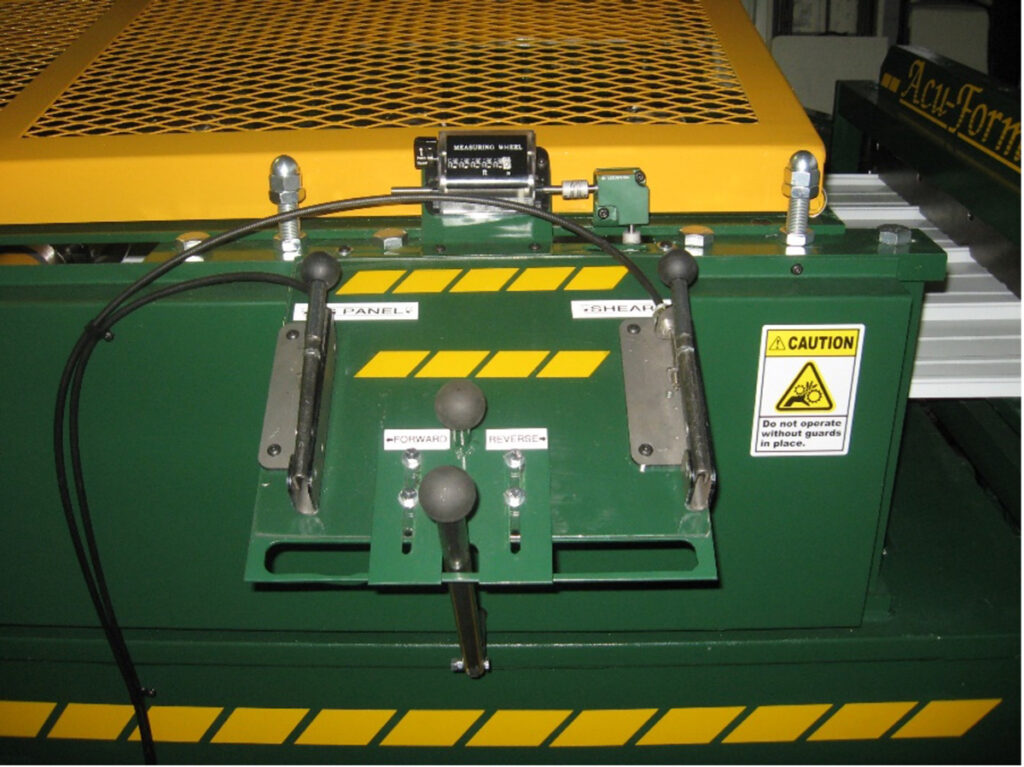
In a mechanical setup, levers operate the panel direction and shear. Photo courtesy of Acu-Form
Wayne explains the various control and power options that Acu-Form offers. Using an ag panel roll former as an example, if you decide to operate with electricity, it’s fully automated. You wire it in to your controller, hit line start and run. “If you go with hydraulic,” he says, “with a 12-volt-powered controller, it’s the exact same thing. You can fully automate it but now you have a power unit with a diesel and hydraulic pump so instead of bringing electric to the machine you’re bringing hydraulic to the machine. But when you’re ready to run it, you have to start the diesel power engine first. You program into the controller what you need, hit line start, and you’re good to go. Both electric and hydraulic are very efficient; one will work as good as the other.”
Sometimes the setup includes a diesel that powers a hydraulic pump. The hydraulic pump and tank create hydraulic pressure. The pressurized hydraulic oil goes in one side of the motor on the roll former and out on the other, which turns the motor. A 12-volt battery sitting by the controller controls screen. The same control panel that is used on an electric machine can be used on a hydraulic machine.
“There are some places where their tradition only allows them to run a smaller controller and it can’t be touch screen,” Wayne continues. If someone is allowed to have hydraulic but no control with a screen, Acu-Form offers a thumb wheel controller to set the length and the number of pieces. One set of wheels sets the length, and another sets number of pieces, up to 99 pieces. The thumb-wheel controller lets the machine roll out, stop, and cut “just like fully automated machines but it just doesn’t have a screen.”
Powering a Mechanical Machine
On a mechanical machine, you have to have diesel power with a line shaft coming into the building. “In a mechanical setup, as it comes into the building, you’ll have gear boxes, belts, and pulleys running different things.” A cable clutch is pulled to engage the line shaft; a lever on the roll former runs the machine forward and reverse. In some setups, the operator has to measure with a tape measure, pull out the piece, and trip the shear, making it a slower process.
While lower-tech machines don’t always operate at the same speed as high-tech machines, there are things that operators can do to make the most of their setup. Learning how to operate machines efficiently should be the first step. Wayne sees a lot of people “use brute strength to make things go.” He advises, “Work smarter, not harder. Heed the directions that your equipment manufacturer supplies – they know best how to operate the machines efficiently.”
Machine features that boost efficiency include upcut shears. “If you use upcut shears (versus down cut or precut) you can slide the material over the next piece. You don’t have to walk every piece out and come back.”
Cable clutches also help speed things up. “What a lot of people do with mechanical machines is they have to walk back to the end of the machine to start the diesel or motor. We install cable clutches on the front of the machine where the infeed is so you pull the lever, that engages the clutch and the machine starts running.” The speed and efficiency is close to that of an electric button. “That’s a big thing to boost efficiency so you don’t have to walk back and forth. Let the motor run on the front end, pull the lever to engage the clutch, and it’s almost like hitting the start button — yet it is still mechanical.”
There are some common challenges that can crop up when running non-electrical machines. If the belts are loose, there may not be enough power to operate the machine effectively. Additionally, Wayne cautions of potential hazards: “Fumes in the shop can be a big thing if they’re running engines inside the shop where they’re working. Either have a separate diesel room or make sure all motors have exhaust going to the outside.”
Due to its weight and bulk, moving coil is also a challenge. “Mechanical guys don’t have forklifts. They might use a chain hoist and move coil by putting a pipe through the eye. If they’re using a chain hoist to move coil, they need to be very, very careful. If anything is not exactly right, the coil can drop down and be damaged or cause severe injury.” Caution and safety should always be top of mind.
Regardless of the power or control options a shop chooses to use, Wayne offers advice that everyone should follow. “If you’re running mechanical, keep all belts, pulleys, and shafts covered and make sure everyone knows where the running parts are. Also, never reach into a running machine. And ALWAYS shut down machines for cleaning.” When it’s machine versus man, the machine is always going to win. RF



